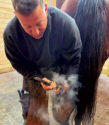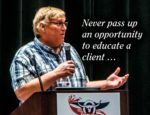Advertise Follow Us
Articles by Jeremy McGovern
Recognize and avoid situations in which either party inadvertently contributes to losing focus on the horse
Read More
Giving New Life to an Old Truck
Missouri farrier Ed Reardon finds a late-career project with a retired 1947 produce truck
Read More
News & Notes
Alert Clients to Signs of Potential Underlying Issues
This collaboration for intervention has become more necessary as more novice owners have entered the industry.
Read More
Manage Clients with Direct Communication
Oklahoma farrier Tom Trosin finds better client relationships through speaking directly with clients rather than relying on texting and email
Read More













